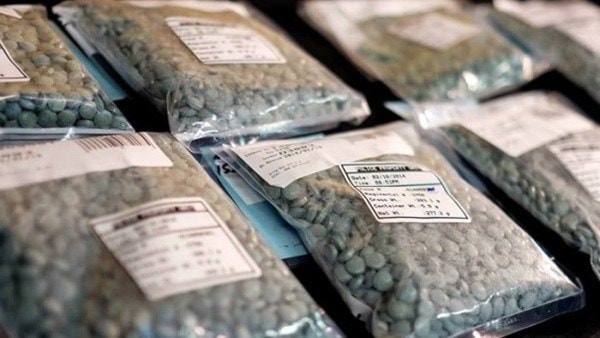Steps are being taken to slow the increase of illicit drug overdoses that are on the rise Island-wide, according to Island Health medical health officer for the Central Island, Dr. Paul Hasselback.
“We have take-home naloxone kits at the Port Alberni Health Unit, the Port Alberni Adult Mental Health and Substance Use Services and at West Coast General Hospital,” said Hasselback.
According to Island Health, each kit includes naloxone hydrochloride, syringes, alcohol swabs, gloves, a rescue breathing barrier, an administration form and step-by-step instructions for use.
They’re seeing plenty of use in the Valley, Hasselback said.
“By the end of July we had dispensed 100 kits,” he said. Those 100 kits do not include WCGH—Hasselback said that those stats must wait on the implementation of a new electronic records system being rolled out Island-wide.
While no recent illicit drug overdose data is available for Port Alberni—the BC Coroners Service cites privacy concerns—Hasselback said that looking at trends in Nanaimo and across Vancouver Island shows a troubling increase.
“We are seeing 50 per cent more overdoses that make it to emergency,” he said.
According to a BC Coroners Service report, from January to July 2016 the Island saw 87 illicit drug overdoses, compared to 61 for all of 2015. Of those 87 for this year, 34 were in Victoria and 19 in Nanaimo. Smaller communities on Vancouver Island are not singled out, Hasselback said, because they’re too small for up-to-date statistics to preserve the victims’ privacy.
Another troubling trend is the increase in fentanyl-related deaths, Hasselback said.
Province-wide, fentanyl-detected deaths made up 238 of the 381 illicit drug overdoses that occurred from January–June of this year.
In all of 2015, only 153 of the 505 illicit drug overdoses were fentanyl-detected ones.
“Absolutely, we have seen fentanyl go from hardly ever [being detected] in 2012 to two-thirds of fatalities having fentanyl present,” Hasselback said.
But those deaths aren’t necessarily all from users who specifically wanted to take fentanyl.
“Any drug that’s purchased on the street could have fentanyl incorporated into it now—frequently without the users’ knowledge,” said Hasselback, adding that users not knowing what they’re buying is a huge risk factor in illicit drug use.
“We don’t have quality control over street drugs.”
While drug combinations have always been a concern, it’s a larger concern with fentanyl in the mix.
“Fentanyl is significantly more potent than heroin or morphine,” said Hasselback.
“When illegal labs don’t get [the next batch] right, users still think that it will give them the same symptoms as the last time.”
And when they don’t, that’s when overdoses tend to occur, said Hasselback.
In response to the growing fentanyl overdose problem across the country, Health Canada has added six fentanyl components (propionyl chloride, 1-Phenethyl-4-piperidone and its salts, 4-Piperidone and its salts, norfentanyl and its salts) to the Controlled Drugs and Substances Act and the Precursor Control Regulations.
But Hasselback cautions against worrying about homemade fentanyl in B.C.
“Almost all of what we’re getting on the streets in terms of fentanyl is produced in labs in southeast Asia,” he said, adding that fentanyl’s increased potency makes it easier to import.
“Rather than bricks of heroin it’s now in [smaller] plastic baggies.”
reporter@albernivalleynews.com
facebook.com/albernivalleynews
